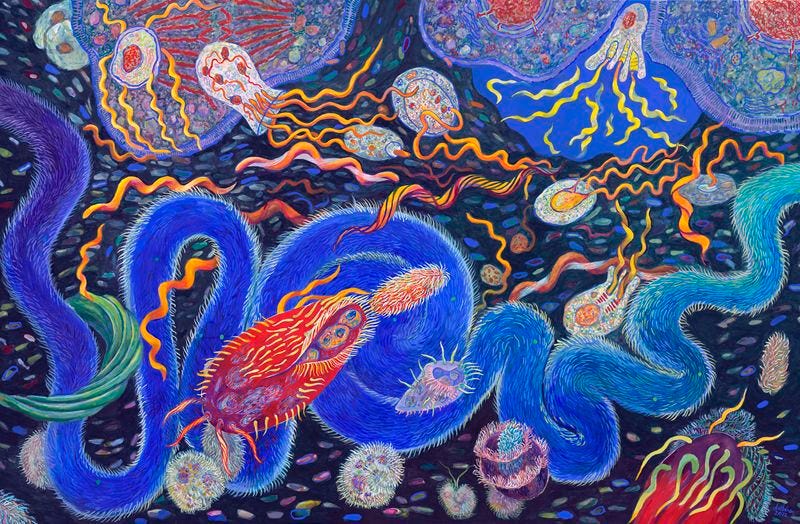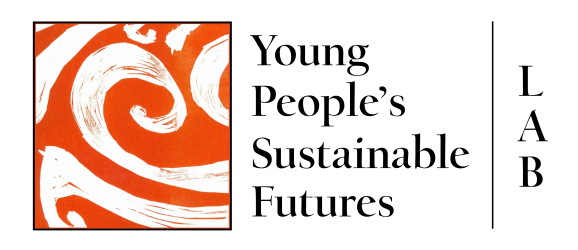
We (James Goring and Peter Kelly) recently attended the 16th European Sociological Association (ESA) conference in Porto, Portugal. The theme of the conference was ‘Tension, Trust and Transformation’. I (James) presented a paper which considers how different, speculative modes of storytelling, can provide innovative, productive, and critical ways to rethink some of the key frameworks that underpin ideas about young people’s ‘voice’.
I referenced a place-based, longitudinal project developed by the Lab in the Greater Geelong region (Victoria, Australia), and shared the following story of Elliot – a young trans* man and his embodied experiences of finding his ‘voice’. My aim in sharing Elliot’s story in this context, was to raise critical questions about young people’s agency, embodiment, and the more-than-human in the context of the profound earth systems crises that characterise the Anthropocene.
As a mode of attention and a practice of worlding, concerned with the complex entanglements of human and non-human life, technologies, discourses, material and discursive elements, SF is a productive technology to think with in this context. Some of this work is being done in the post-humanities (Braidotti 2019), in feminist studies of science, technology and society (Haraway 2016), and in critical studies of the Anthropocene and the Capitalocene (Latour 2017, Moore 2016, Tsing 2015). The boundary crossing possibilities and implications of speculative modes of storytelling are productively captured in the ways in which Haraway discusses the different manifestations of what she calls ‘SF’ – speculative fabulation, science fiction, speculative feminism, science fact, string figuring – and what she sees SF as providing in her ‘craft’ of ‘multispecies story telling in the feminist mode’. These speculative modes point to new possibilities, and problems, for the stories that can be told in sociologies of young people. As Haraway (2016) observes, It matters what stories tell stories.
The Place and the Project
For much of the 20th century the city of Geelong (population 270,000+) was a prosperous regional centre, home to an array of industrial manufacturing operations. However, during the last four decades the impacts of processes of neoliberal globalisation and government industry restructuring policies have fallen heavily on the region producing and reproducing a patchwork of advantage/disadvantage.
Our project examined the challenges faced by young people across Geelong during and after the COVID-19 pandemic, and their health and wellbeing, education and employment pathways and transitions during this time.
We used a platform called VideoAsk – an interactive online video tool, to conduct asynchronous video interviews with young people. This approach allowed participants to respond at their convenience and in their preferred format—video, audio, or text – with time to prepare responses and with support from the research team, teachers and support workers.
During the first year, 33 young people responded to 4 questions:
1) My life at the moment
Can you tell us about how you view your life at the moment?
2) The world now, and in the future
Can you tell us your thoughts about the current state of the world at the moment?
3) My life in the future
We want to know a little about your hopes and aspirations for your future.
4) Something else?
This is an opportunity for you to say something about your life, and the things that you care about.
During the second year, participants shared updates on their life at that moment, and ‘a story about an episode, event, person, or place, a good time or bad time that has got you to this point.’
In 2023 young people were invited to view 3 to 5 minutes of footage from their video response to the prompt ‘My life in the future’ during 2021.
Over the past four years these video interviews have been an engaging research method which provided a more ‘private’ space for participants to discuss their concerns and interests. As in all qualitative research, some young people were more expansive than others, and became ‘key participants’.
Elliot’s Story
The following video is a brief snapshot of footage shared by Elliot during 2021, 22 and 2023.
The clip comes from an extended video documentary titled ‘Crisis, Change and Growing up in Geelong’ that we produced to share the stories of a number of young people in Geelong during the pandemic. The documentary aimed to foster a deeper understanding of the challenges and opportunities that young people in Geelong face, and the obligations and responsibilities that we and other stakeholders have for these and future generations. The three ‘Acts’ which were used to structure the extended documentary – Futures, Complexities, and Change.
As will become apparent in this clip, Elliot came to see himself as occupying a position in which his ‘voice’ could be used to educate others – such as medical professionals, education and youth service providers, government agencies and other young people – and to advocate for issues related to trans* young people in particular, but also young people more broadly.
Like many of the young people we interviewed, Elliot told us of a number of events and circumstances which presented significant challenges for his well-being, that had resulted in disruptions in his education, training and employment pathways, and which suggested that we needed to develop different modes of telling their stories, and different ways to make sense of their hopes and aspirations for the futures that they are able to imagine.
The Biocultural Politics of Young People’s Voice in the Anthropocene
In listening to Elliot, and the many young people that we have worked with, and considering what stories we can we tell with, for and about young people and the Anthropocene – we have been drawn to Samantha Frost’s (2016) conceptualisation of humans as ‘biocultural creatures’ who live and thrive in ‘biocultural habitats’. In doing so, we have suggested that across sociologies of young people, there is a need to constantly grapple with questions of scale and scope, materialities, and the entanglements between the human and more-than-human.
Frost’s work compels us to think differently about young people’s embodied materiality, their different capabilities and vulnerabilities that emerge from and alongside the matter-of-factness of such things as their flesh and blood, their gut biomes, their organs and (neuro-diverse) brains, and the bio-chemical and electro-materiality, the ‘energy’, that makes ‘life’ possible.
These ideas are productive for framing what we want to call a ‘biocultural politics’ of young people’s voice in the Anthropocene. This ‘story’ of ‘bioculturalness’ enables us to explore the ways in which Elliot understands his own agency. What he imagines he can do. How, and where and when he can use his voice. How his capacities and capabilities are expressed in and through the embodied, affective dimensions of his trans* identity, and the changes to his bioculturalness that are facilitated by/at the intersections of particular bio-political-technological emergences at different scales (hormonal, identity, voice).
For Frost (2016, p.151) the idea of humans as biocultural creatures ‘allows us to take account of the layered, multifaceted dimensions of perceptual response without falling prey to a biological, environmental, or cultural reductionism’. She (2016, p.152) suggests that one of the more significant ‘implications of the conceptualization of humans as biocultural creatures is the reconfiguration of what we consider to fall under the rubric of “culture”’. A reconfiguration that would ‘bring within the ambit of “culture” all the chemical, spatial, thermal, viral, bacteriological, and nutritive factors’ that allow biocultural creatures to exist, and which are deeply entangled with ‘the social, political, aesthetic, and economic practices that in combination, and sometimes at cross-purposes, provide the conditions through which biocultural humans grow into subjects’ (Frost, 2016, p.152).
What Stories Can We Tell of Young People and the Anthropocene?
At the end, the ‘problem’ of young people’s voice, and how we might tell a story about young people’s voice, is something that is not only about Elliot’s ‘voice’ – though that remains important to us. Including because it points the way to thinking beyond one young trans* man’s efforts to find a voice and use it in ways that he wants to. The problem is also one of needing to constantly grapple with questions of scale and scope – from the levels of hormones, to ‘gross organisms’, to places, to the planetary and beyond – with the vitality, materiality and bio-political-technological dimensions of ‘life’, and with the entanglements between the human and the more-than-humanness that shape a ‘biocultural politics’ of young people’s ‘voice’ in the Anthropocene.
It matters what thoughts think thoughts.
It matters what knowledges know knowledges.
It matters what relations relate relations.
It matters what worlds world worlds.
It matters what stories tell stories.
Donna Haraway (2016, pp.38-39)
References
Braidotti, R. (2019). Posthuman Knowledge [Online]. Available: https://www.gsd.harvard.edu/event/rosi-braidotti
Frost, S. (2016). Biocultural Creatures: Toward a New Theory of the Human. Durham: Duke University Press.
Haraway, D. J. (2016). Staying with the Trouble: Making Kin in the Chthulucene. Durham: Duke University Press.
Latour, B. (2017). Facing Gaia: Eight Lectures on the New Climatic Regime. New York: John Wiley & Sons.
